"Cherishing Little Steps - A Haven for Baby and Family Journeys"
Keeping Kids Safe in Transit
Are you terrified every time you put your precious child in the car or take them on public transportation? Keeping kids safe in transit is of utmost importance to every parent. It’s a constant worry, but fear not! There are essential steps you can take to ensure their safety and peace of mind.
From car seat safety to teaching pedestrian awareness, this guide will equip you with the knowledge and tools to protect your child in any transportation situation. With proper seatbelt usage, choosing the right booster seat, and teaching stranger danger awareness, you’ll be well-prepared for any journey.
So let’s dive in and create a comprehensive safety plan for your little one!
Key Takeaways
- Properly install and secure car seats to ensure optimal protection for children while in transit.
- Teach and reinforce pedestrian safety practices, such as using designated crosswalks, looking both ways before crossing the street, and avoiding distractions while walking.
- Promote bicycle safety by wearing properly fitting helmets, obeying traffic laws, and using hand signals to communicate with other road users.
- Educate children about public transportation safety, including proper etiquette, stranger danger awareness, and the importance of reporting suspicious or inappropriate behavior.
Car Seat Safety
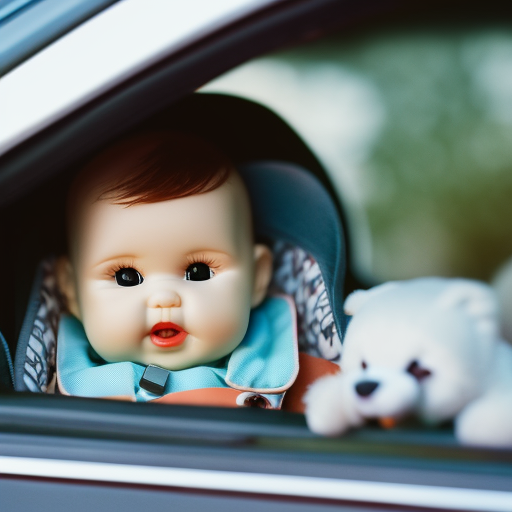
Ensure your child’s car seat is properly installed and secured. When it comes to keeping your little one safe on the road, nothing is more important than a correctly installed car seat. Whether you’re a first-time parent or a seasoned pro, it’s crucial to understand the ins and outs of car seat installation.
Firstly, let’s talk about rear-facing versus forward-facing. The American Academy of Pediatrics recommends keeping your child in a rear-facing car seat for as long as possible, usually until they reach the maximum height and weight limits set by the manufacturer. Rear-facing seats provide optimal protection for your child’s head, neck, and spine in the event of a crash.
Now, let’s dive into the installation process. Start by reading the car seat manual carefully and following the manufacturer’s instructions. Make sure the seat is securely fastened to the vehicle, using either the seat belt or the lower anchors and tether system. Check for any movement or looseness by giving the seat a firm tug from side to side and front to back. It shouldn’t move more than an inch in any direction.
Proper Seatbelt Usage
To ensure your child’s safety in transit, prioritize the proper utilization of seatbelts. Seatbelts are a crucial component of keeping your child secure while on the road. Here are some key points to remember regarding seatbelt usage:
-
Seatbelt maintenance: Regularly inspect seatbelts for any signs of wear and tear. Check for frayed or damaged straps, and ensure that the buckles are functioning properly. Replace any faulty seatbelts immediately to maintain their effectiveness.
-
Seatbelt laws: Familiarize yourself with the seatbelt laws in your area. It’s essential to know the age and height requirements for children to use seatbelts instead of car seats or booster seats. Stay informed about any updates or changes to the laws to ensure compliance and keep your child safe.
-
Buckle up every time: Make it a habit to always buckle up your child before starting the car. Emphasize the importance of wearing seatbelts, explaining that it isn’t just for their safety but for the safety of everyone in the vehicle.
-
Lead by example: As a parent, you play a significant role in shaping your child’s behavior. By consistently wearing your own seatbelt, you set a positive example for your child to follow.
Choosing the Right Booster Seat
Ensure your child’s safety in transit by choosing the right booster seat. When it comes to car seat installation, it’s crucial to consider age and weight requirements. Booster seats are designed to provide additional protection and comfort for children who’ve outgrown their forward-facing car seats. They elevate your child, allowing the seatbelt to fit properly across their chest and hips.
When selecting a booster seat, look for one that meets the height, weight, and age recommendations of your child. Some booster seats have adjustable features, allowing you to customize the fit as your child grows. It’s also important to check the expiration date on the seat to ensure its effectiveness and safety.
To install the booster seat correctly, follow the manufacturer’s instructions carefully. Make sure the seat is securely fastened to your vehicle’s seat and that the seatbelt is properly threaded through the designated guides. The seat should be snug and immobile, without any excessive movement.
Remember, a booster seat is only effective if used correctly. Regularly check the fit and adjust as needed. Keep in mind that your child should continue using a booster seat until they meet the height and weight requirements recommended by your state’s laws.
Teaching Pedestrian Safety

As you continue to prioritize your child’s safety in transit by choosing the right booster seat, it’s important to also focus on teaching pedestrian safety. This will equip your child with the necessary knowledge and skills to navigate the streets safely.
Here are some effective strategies to teach pedestrian safety:
-
Crossing Guard Assistance:
-
Encourage your child to use designated crosswalks where crossing guards are present. These trained professionals can help ensure a safe crossing by stopping traffic and guiding pedestrians.
-
Teach your child to wait for the crossing guard’s signal before crossing the street. This helps them understand the importance of following instructions and waiting for a safe opportunity to cross.
-
Pedestrian Safety Games:
-
Engage your child in interactive games that promote pedestrian safety. These games can teach them about traffic signs, road rules, and how to identify potential hazards.
-
Create a mock street scene in your backyard or use online resources that simulate real-life traffic situations. This hands-on approach allows your child to practice decision-making and learn how to react in different pedestrian scenarios.
Safe Walking Practices
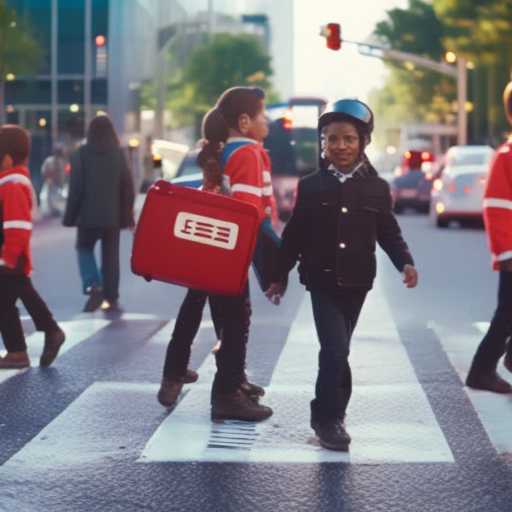
Practice safe walking habits to protect your child while they’re on foot. Teaching road crossing skills is crucial for ensuring their safety. Start by teaching them to look left, right, and left again before crossing the street. Emphasize the importance of using designated crosswalks and waiting for the signal to change before crossing. Teach them to make eye contact with drivers to ensure they’re seen.
Encourage them to walk facing traffic when there are no sidewalks available. Remind them to stay alert and avoid distractions, such as using their phones or wearing headphones while walking.
Moreover, it’s essential to provide your child with playground safety tips. Teach them to follow the rules, use equipment properly, and be mindful of other children playing nearby. Encourage them to be cautious of potential hazards, such as sharp edges, loose or broken equipment, or slippery surfaces.
Bicycle Safety Tips
To enhance your child’s safety while riding a bicycle, equip them with a properly fitting helmet. A bike helmet is essential in protecting their head from potential injuries in case of a fall or collision. But helmet alone isn’t enough. Teach your child the importance of following road rules to ensure a safe biking experience. Here are some tips to keep in mind:
-
Always wear a bike helmet: Make sure the helmet fits snugly and sits level on the head. It should cover the forehead and not obstruct the child’s vision.
-
Obey traffic laws: Teach your child to follow the same rules as cars, including stopping at stop signs and red lights, signaling when turning, and riding in the same direction as traffic.
-
Be visible: Encourage your child to wear bright-colored clothing and use reflectors or lights on their bike to increase visibility, especially during low-light conditions.
-
Stay alert: Remind your child to keep their eyes and ears open, avoiding distractions like headphones or texting while riding.
-
Use hand signals: Teach your child the proper hand signals for turning and stopping, so they can communicate their intentions to other road users.
Helmet Fitting and Usage
When fitting and using a bike helmet, it is important for you to ensure a secure and proper fit to maximize your child’s safety while riding a bicycle. A well-fitted helmet reduces the risk of head injuries and provides the necessary protection in case of accidents. To help you understand the importance of helmet fitting and usage, here is a table that outlines the key steps:
| Helmet Fit Checklist | |
|---|---|
| Size | Choose a helmet that fits snugly on the head. |
| Position | Position the helmet level on the head, with the front edge above the eyebrows. |
| Strap Adjustment | Adjust the chin strap so that it is snug under the chin, with only one or two fingers fitting between the strap and the chin. |
| Stability | Shake your head side to side and front to back. The helmet should stay in place and not shift. |
Public Transportation Safety
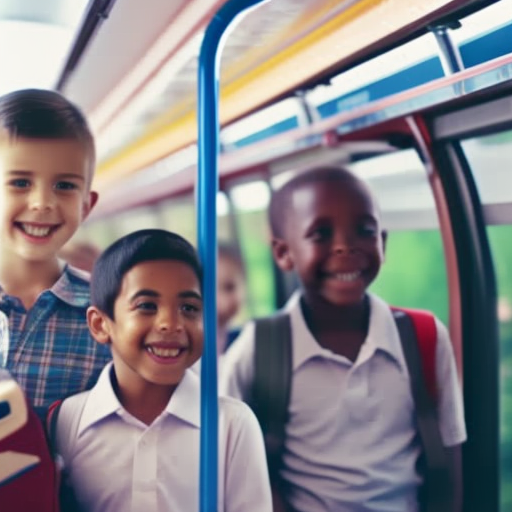
Ensure your child’s safety during public transportation by following these guidelines:
-
Public Transport Etiquette
-
Teach your child to respect other passengers by keeping their voices down and refraining from disruptive behavior.
-
Encourage them to offer their seat to elderly or pregnant passengers, promoting kindness and courtesy.
-
Safety During Rush Hour
-
Advise your child to avoid crowded areas, especially during peak times when rush hour can result in congestion.
-
Teach them to be aware of their surroundings and to hold on to handrails or seatbacks to prevent falls or injuries.
When using public transportation, it’s crucial to prioritize safety. By instilling proper public transport etiquette, you’re teaching your child to be considerate of others and promoting a positive atmosphere during their commute.
Encouraging them to be mindful of rush hour conditions will help them navigate crowded spaces more safely. Remind your child to keep their voices low and avoid disruptive behavior, as this can create unnecessary tension with fellow passengers. Additionally, teaching them to offer their seat to those who may need it more shows empathy and respect.
During rush hour, remind them to be cautious, avoiding crowded areas and holding on to handrails or seatbacks for stability. By following these guidelines, you can ensure your child’s safety during public transportation.
Stranger Danger Awareness
Promote your child’s safety by educating them about stranger danger awareness while using public transportation. In today’s digital age, it’s vital to not only teach our kids about stranger danger in the physical world but also in the online realm. Online safety is just as important as personal safety when it comes to protecting our children from potential dangers.
Start by explaining to your child what stranger danger means and why it’s important to be cautious when interacting with people they don’t know. Teach them to never share personal information, such as their full name, address, or phone number, with anyone they meet online or in person. Encourage them to only accept friend requests or messages from people they know and trust.
Furthermore, discuss the potential risks of online communication and the importance of reporting any suspicious or inappropriate messages or behavior. Remind your child that they can always come to you if they feel uncomfortable or unsure about someone they’ve encountered, both in real life and online.
Safe Bus and Train Behavior

Practice good manners and respect for others while riding the bus or train. It’s important to follow bus etiquette and train rules to ensure a safe and pleasant journey for everyone on board.
Here are some tips to help you navigate public transportation with ease:
-
Be mindful of personal space: When the bus or train is crowded, make sure to respect people’s personal boundaries. Avoid leaning on others or invading their space.
-
Offer your seat: If you see someone who needs a seat more than you do, such as an elderly person, someone with a disability, or a pregnant woman, be kind and offer them your seat.
-
Keep the noise down: Public transportation can be noisy enough, so try to keep your conversations and music at a respectful volume. Remember, others may be reading, studying, or simply enjoying a quiet ride.
-
Hold on tight: When the bus or train is in motion, hold on to the handrails or straps to maintain your balance. This won’t only keep you safe but also prevent unnecessary accidents.
-
Mind your belongings: Keep your bags, backpacks, and personal items close to you to avoid inconveniencing others or becoming a target for theft.
By following these simple bus etiquette and train rules, you can contribute to a positive and safe transit experience for everyone.
Enjoy your ride!
Emergency Preparedness
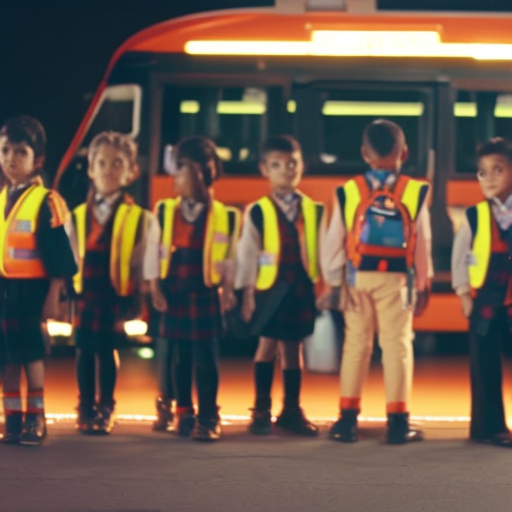
Being prepared for emergencies is essential when traveling with children on public transportation. In the event of an emergency evacuation, having a plan in place will help ensure the safety of your child.
First and foremost, make sure your child knows what to do in case of an emergency. Teach them to stay calm and follow the instructions of the transportation staff.
It’s also important to have emergency contact information readily available. Make sure your child knows their full name, your phone number, and any other important contact information. You may also want to consider giving your child a card with this information to keep in their backpack or pocket.
Additionally, it’s a good idea to have a designated meeting spot in case you and your child become separated during an emergency. This could be a nearby landmark or a specific location on the transportation vehicle.
Creating a Safety Plan
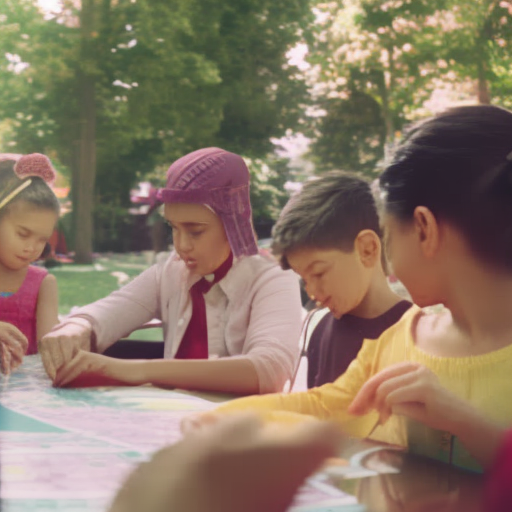
Make sure to develop a safety plan to keep your child secure while traveling on public transportation. Creating a safety plan is essential to ensure that your child remains safe and protected during their journey. Here are some key steps to consider when developing your safety plan:
-
Teach emergency drills: Familiarize your child with emergency procedures, such as what to do in case of a fire or an evacuation. Practice these drills regularly so that they become second nature to your child.
-
Childproof your home: Before heading out, make sure your home is childproofed. Secure cabinets, install safety gates, and cover electrical outlets to minimize potential hazards. A safe and secure home environment will provide peace of mind while you’re away.
-
Pack a safety kit: Prepare a safety kit that includes essential items like a first aid kit, emergency contact information, and any necessary medication. Having these items readily available can be crucial in case of an emergency.
-
Establish communication guidelines: Set clear guidelines for communication with your child while they’re on public transportation. Teach them to memorize important contact information, such as your phone number, and to seek help from responsible adults or authorities if needed.
By implementing these steps, you can create a comprehensive safety plan that will help protect your child while they’re traveling on public transportation.
Frequently Asked Questions
What Are Some Common Distractions to Avoid While Driving With Children?
Avoid distractions while driving with kids. Create a safe environment by staying focused and not engaging in activities that take your attention away. Keep them secure and minimize potential risks.
How Can Parents Ensure That Their Child’s Car Seat Is Properly Installed?
To make sure your child’s car seat is properly installed, follow these car seat safety tips. Check the manual for instructions, use the correct seat for your child’s age and size, and secure it tightly in the back seat.
What Should Parents Do if Their Child Refuses to Wear a Seatbelt?
When your child refuses to wear a seatbelt, stay calm and explain the importance of safety. If they continue to resist, establish consequences such as no screen time or a loss of privileges. Consistency is key.
Are There Any Specific Guidelines for Choosing a Booster Seat for Older Children?
When choosing a booster seat for older children, it’s important to consider safety guidelines. Look for seats that provide proper support and are designed for your child’s age and weight. Keep them safe on the go!
How Can Parents Teach Their Children About the Importance of Pedestrian Safety?
Teaching your children about pedestrian safety is crucial. You can start by explaining the importance of looking both ways before crossing the street, using crosswalks, and obeying traffic signals. By setting a good example and practicing these safety rules together, you’ll help keep them safe.
Conclusion
As you embark on the journey of keeping your kids safe in transit, remember that you hold the key to their protection. Just like a seatbelt keeps them secure, your guidance and preparation will shield them from harm.
Let your love be the driving force behind teaching them pedestrian safety, stranger danger awareness, and safe bus behavior. With a strong safety plan in place, you can rest assured that your little ones will navigate the world with confidence and caution.


